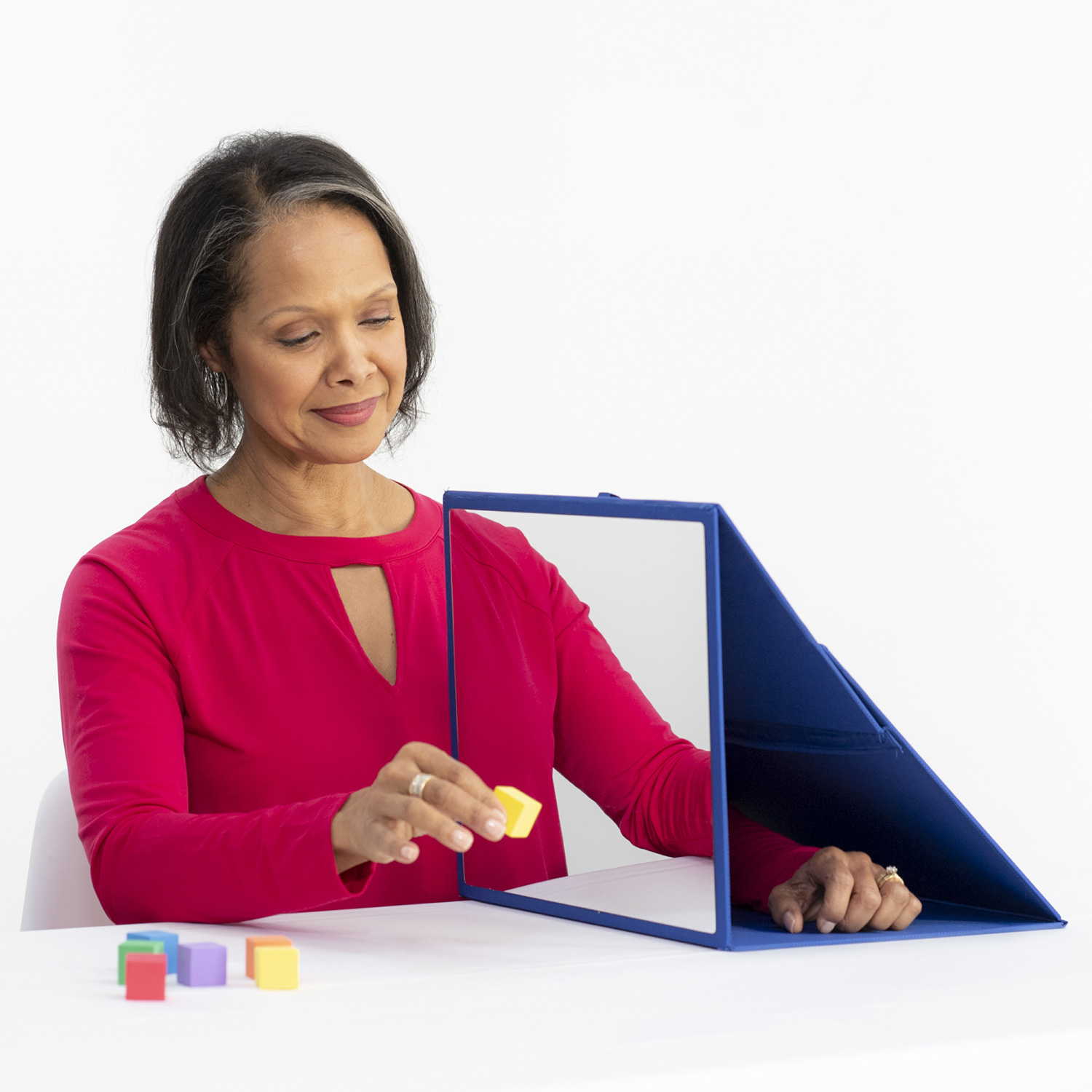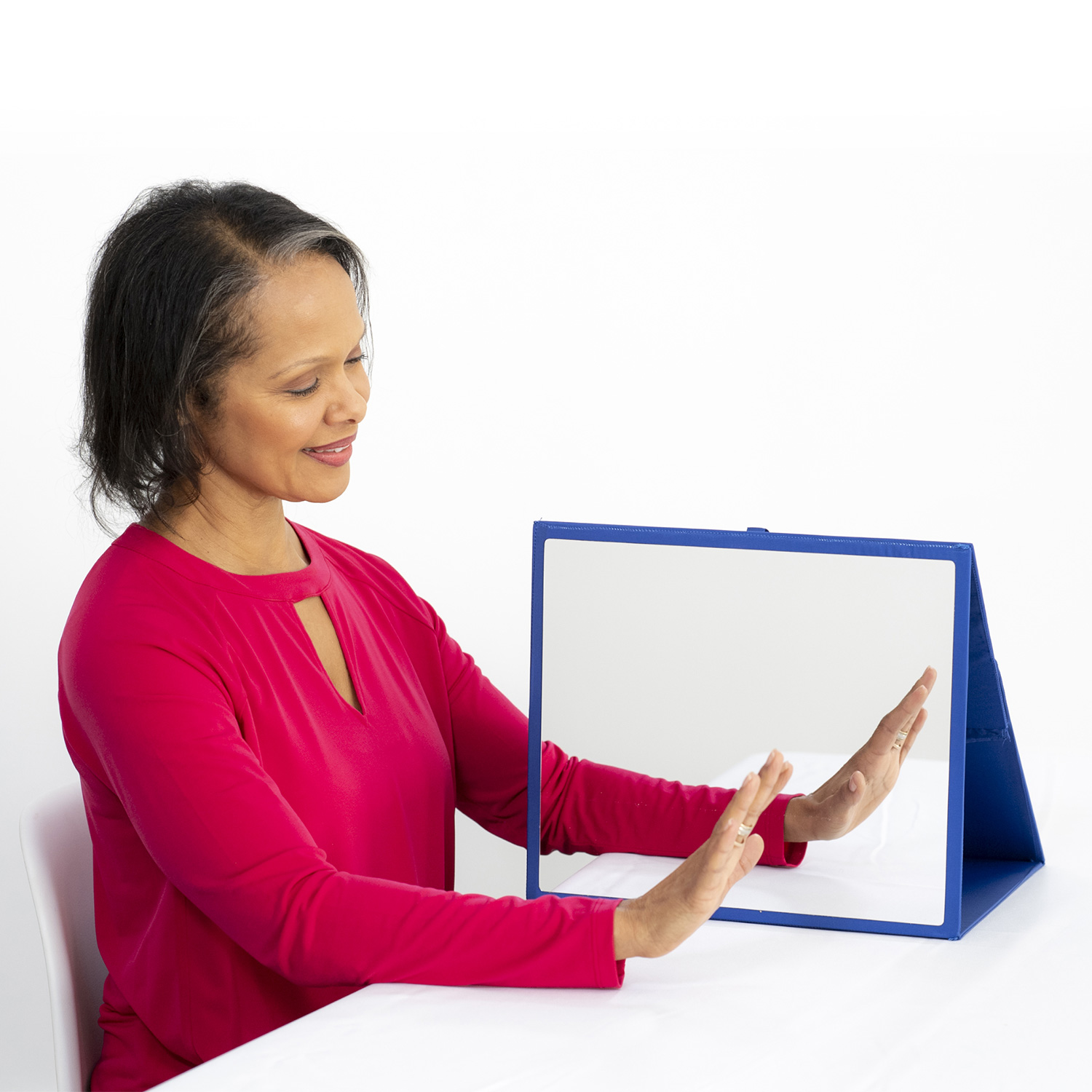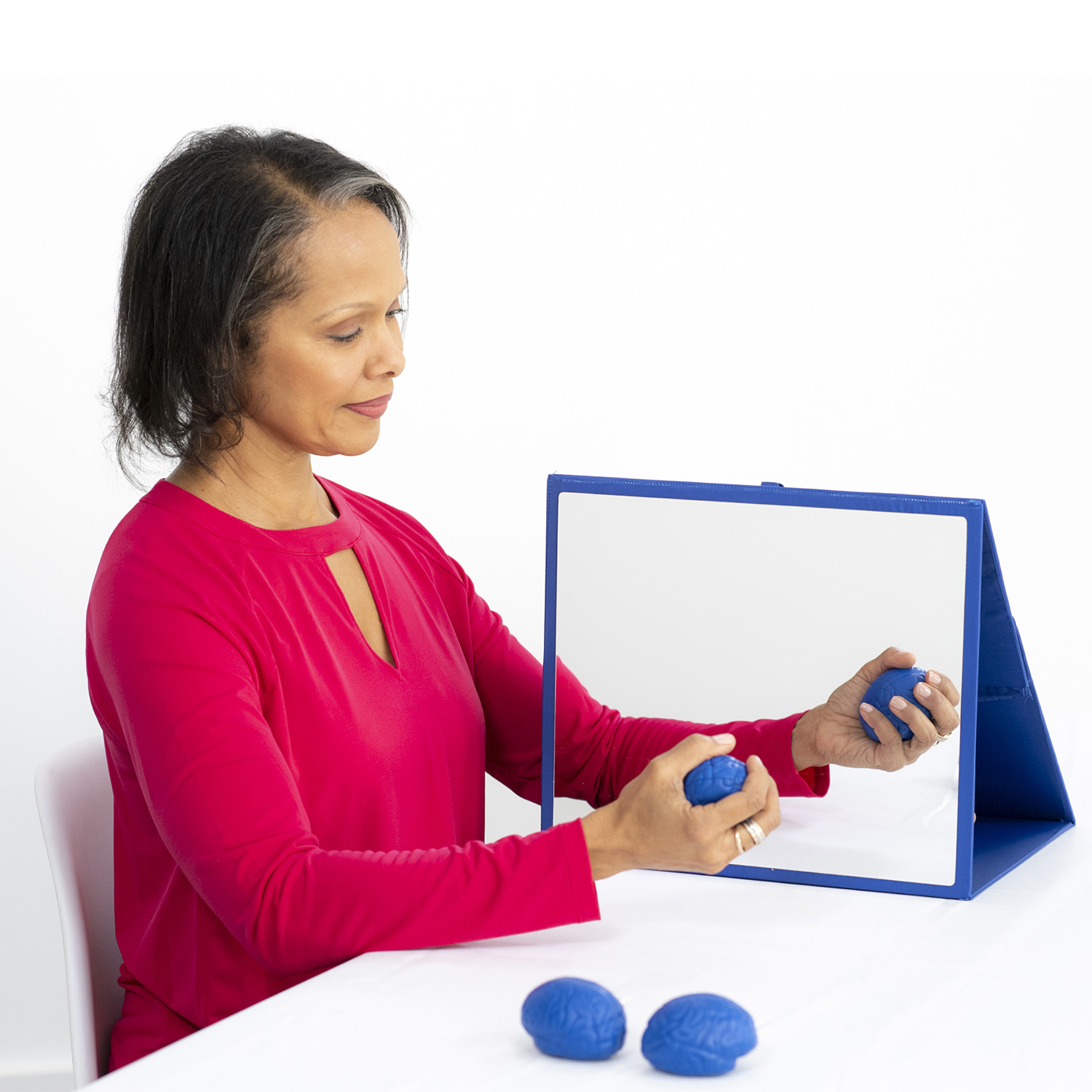Saebo Mirror Box
£77.00
All prices are listed excluding VAT.
If you are not eligible for VAT exemption, VAT will be added in the cart.
The SaeboMirror Box is a lightweight, portable rehabilitation tool designed for mirror therapy—a proven technique used to improve motor function and reduce pain .
Key Features:
- ✅ Durable and lightweight design for easy transport and storage
- ✅ Quick setup for use at home or in clinic
- ✅ Effective for stroke, brain injury, CRPS, and phantom limb pain
- ✅ Supports neuroplasticity and motor relearning through visual feedback
- ✅ Supported by the current UK and Ireland National Clinical Guidelines for Stroke
Product Description
The SaeboMirror Box is a lightweight, portable rehabilitation tool designed for mirror therapy—a proven technique used to improve motor function and reduce pain .
By placing the affected limb inside the box and using the mirror to reflect the healthy limb, the brain is visually tricked into perceiving movement in the impaired side. This visual feedback can help retrain the brain, stimulate motor recovery, and reduce phantom limb or post-stroke pain. Mirror Therapy helps program the brain to perceive the affected limb as the healthy one.
Key Features:
- ✅ Durable and lightweight design for easy transport and storage
- ✅ Quick setup for use at home or in clinic
- ✅ Effective for stroke, brain injury, CRPS, and phantom limb pain
- ✅ Supports neuroplasticity and motor relearning through visual feedback
- ✅ Supported by the current UK and Ireland National Clinical Guidelines for Stroke
Whether used independently or alongside other Saebo technologies (e.g. our SaeboStim Pro with sensory kit), the SaeboMirror Box is an effective, and evidence-based solution to enhance your rehabilitation.
Additional Information
| Weight | 1.2 lbs |
|---|---|
| Dimensions | 13.75 × 12 × .75 in |
You must be logged in to post a review.
SaeboGlove FAQs
What is Mirror Box Therapy?
Saebo Mirror Box is a scientifically proven treatment tool used to speed up and improve motor function following stroke and other neurological disorders. During Mirror Therapy, the user places their affected limb inside the mirror box and their unaffected hand and forearm in front of the mirror. While looking at the image in the mirror, the use is then directed to perform movement with their unaffected hand in front of the mirror while simultaneously attempting to copy the movement with their hidden affected hand. Mirror Therapy helps program the brain to perceive the affected limb as the healthy one creating the illusion that both limbs are working normally.
Who Can Benefit?
Clients suffering from neurological injury such as brain injury or stroke can benefit from mirror therapy. In addition, individuals afflicted by pain are also appropriate for this treatment.
Mirror therapy can be used when there is minimal or no movement in the affected limb.
What does the research say about Mirror Therapy?
The scientific community is overwhelmingly in agreement about the effects of Mirror Therapy and stroke upper limb recovery. According to research, there is strong evidence that mirror therapy can improve arm and hand motor function following stroke.
Studies show that Mirror Box Therapy can help with reorganizing the damaged part of the brain, also known as neuroplasticity, as well as improving motor recovery and function.
Commonly known benefits include:
• Improve motor function
• Reduce neglect
• Improve sensation
• Reduce spasticity
• Reduce pain
Mirror therapy is recommended in the Arm Function section of the UK and Ireland National Clinical Guidelines for Stroke 2023
What is the Clinical Criteria Required to Perform Mirror Box Therapy?
The user must exhibit:
- Sufficient cognitive and verbal abilities to focus at least 10 minutes on the mirror reflection and follow instructions.
- Adequate vision.
- Client should see a clear image of the entire hand in the mirror
- With visuospatial neglect, clients should be able to turn their head towards the mirror image when asked to do so and keep their attention focused on the mirror image at least for 5-10 minutes.
- Sufficient balance and trunk control to sit in a wheelchair or normal chair unsupported for the duration of the treatment.
- Normal and pain-free range of motion. Severe constraints of the non-affected limb could limit execution of mirror therapy activities.
What Are the Contraindications?
There are no contraindications.
Is a Therapist Required to Conduct Mirror Box Therapy?
No. Mirror Box Therapy can be provided at home or in hospital without the supervision of a Therapist.
What is the Recommended Protocol?
Research suggests that individuals suffering from stroke and other neurological injuries appear to receive the most benefit when Mirror Box Therapy exercises are performed at least 5 days per week for 30 minutes per day.
What Are the Recommended Mirror Therapy Exercises?
In addition to searching online for free hand exercises using the Mirror Box, ten (10) common hand exercises are included for free with each Saebo Mirror Box Therapy order.
Is it Helpful to Combine other Modalities While Performing Mirror Box Therapy?
Yes. To maximize the benefits of the treatment, combining Mirror Therapy with electrical muscle stimulation should be considered. In addition, research supports the combination of Mirror Therapy and sensory electrical stimulation (e.g. our SaeboStim Pro with Sensory Accessory Kit).



Reviews
There are no reviews yet.